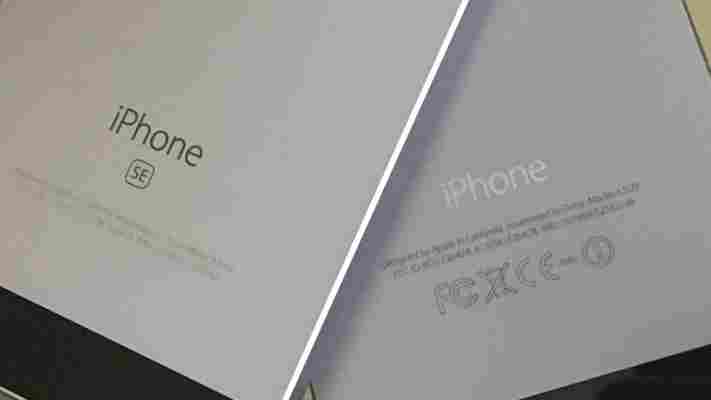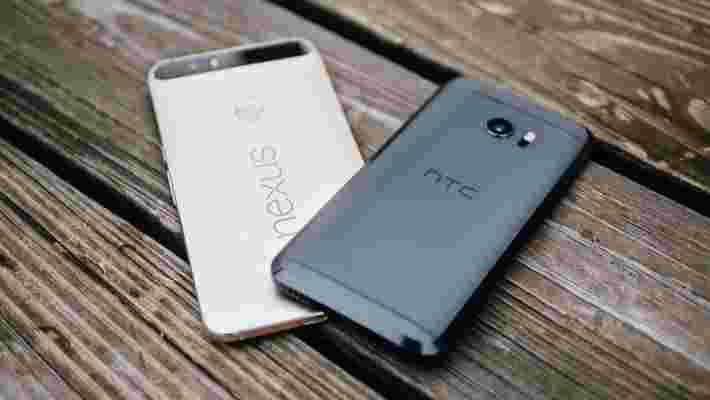HTC launches a $100M startup accelerator to show it’s really, really serious about VR
HTC’s been busy with launch of the HTC 10 and Vive , but now it’s got a new project on deck: an accelerator program for virtual reality startups.

Simply named ‘Vive X,’ the accelerator is investing $100m to cultivate its set of startups. The program will pilot in Beijing in May, after which it will arrive in Taiwan and San Francisco.
Notice the emphasis on Asia; Oculus and other VR companies haven’t made a huge dent in that market yet, so HTC – which is based in Taiwan – is trying to seize the opportunity.
Vive X will begin by handpicking a small set of startups from around Asia, but going forward “the program is open to companies from any industry that are creating content, tools, applications and accessories that enrich the VR ecosystem and end-user experience.”
iPhone SE review: not too little, but maybe too late
In so many ways, the iPhone SE is the phone we’d been waiting for. It’s just that our wait kind of ended with the iPhone 6, and Apple is now picking up where it left off with 4-inch screens. The question now is whether or not you should consider the iPhone SE when it’s time for a new phone.

And that answer is complicated.
If you’ve held an iPhone 5S, you know what you’re getting with the SE. It’s small, linear and familiar. There are no surprises when it comes to the shell — we’ve even got the two-tone rear back!
The screen is also the same as we left it; still four inches with no 3D Touch trickery or increased pixel count. Even Touch ID is older hardware, not the maybe-too-snappy sensor we have on new iPads and the 6S.
Inside, the SE is a different animal, but it is a beast . The easiest way to put it is that you’re getting iPhone 6s internals in a 5S body . The latest A9 processor is there, as is an NFC chip for Apple Pay. Here are the main specs:
A9 SoC
M9 CoProcessor
NFC (for Apple Pay)
4-inch Retina display at 1136‑by‑640‑pixel resolution (326 ppi)
7.6mm thick
12 megapixel iSight (rear) camera
1.2 megapixel FaceTime (front) camera
Touch ID (first generation)
What is surprising is the battery, which is about the same capacity as the 5S (technically a touch smaller), but lasts a hell of a lot longer. Almost twice as long in my testing — legitimately.
NFC is new on a 4-inch phone from Apple, which means you’ll get Apple Pay for the first time on the smallest screen.
The rear camera is capable Live Photos and 4K video. The front facing camera uses Retina flash — which lights up the screen in low-light situations — for selfies.
Perhaps the real attraction is the battery life, which is on par with the iPhone 6S Plus. I can go two full days with light-medium use on an iPhone 6S Plus, and I get the same from the SE.
With iOS 9.3, Apple brought some new features the SE takes advantage of. I really enjoy Night Shift on the SE; I’m already straining just a touch to read articles on the small screen, so cutting the blue-ish light out helps a ton.
The chamfered edges of the SE are a matte finish, and won’t look as terrible as the 5S after a month or two if you’re hard on your phone. It also has the slightest bit more grab because of the matte corners, which is nice if you’re clumsy (but don’t use a case).
The pricing is also new. The SE starts at $399, which is the lowest introductory price Apple has ever offered on an iPhone. That’s for the 16GB model; the 64GB variant will run you an extra $100 (and you should grab that one if you buy the SE).
Using the SE was a trip back in time, but ultimately a happy one.
The small form factor seems dated and silly to some, but it has its charms. One-handed typing is again possible without gimmicks; on the 6 or 6S it’s clumsy, and you can forget about it on the Plus models.
There’s also something to be said for having a smaller phone when you’re running around all day. While I spend most of my time in an office setting, those who are on the go would likely find favor with the SE. Objectively, the only thing you’re really losing is screen size, and that complaint wanes after a few days.
Using Apple Pay is something I’ve come to rely on, and having it in a 4-inch form factor seems like a better idea than with larger phones. It’s tiny, fast and effective for mobile payments.
One-handed typing is also something I forgot I liked, but longer messages still feel better when typing in landscape mode on the SE.
While you end up adjusting to the screen size after a few days, I’m a big believer in 3D Touch — and the SE doesn’t have it. I’ve essentially re-taught myself to use 3D Touch ahead of opening apps blindly, and the SE made me realize how much I missed the feature.
The Touch ID is first-generation, so if you’re used to lightning quick unlocks and payment verifications, you’ll notice the difference.
Other than that, there’s nothing really missing with the SE.
That’s the toughest question to answer — but I will.
If you’ve got an iPhone 6 or newer, the SE likely isn’t for you. Even with specs being equal or (mostly) a toss-up in real-world situations, the smaller screen is just harder to return to after you’ve gone big. For the niche crowd who really wish their iPhone 6 or 6s was smaller, run out and get the SE now. You’ll love it.
If you’ve got a 5S or older and enjoy your device — but know it’s time to upgrade — take a hard look at the SE. You get just about every important feature of the larger iPhones in a familiar form factor, and that’s actually saying quite a bit. Besides, all your current accessories will work with it, so you won’t have to find a fun new case to fall in love with.
I’d also encourage those who really like the Apple Watch to consider the SE. It’s much more pocketable than the iPhone 6 or Plus models, which makes it a bit more ideal for the gym or when running. Of course, you’re not likely to have a phone just for working out — and will have to live with the SE for the rest of the time you’re not in the gym — but it’s worth consideration.
I really like the SE. In my time with it, it performed like a shrunken iPhone 6s, and you can bet I’d have given it a ton of consideration if Apple launched it alongside (or ahead of) the 6 and 6 Plus, or even between it and the ‘S’ launch.
But Apple didn’t do that.
There are a lot of small tweaks that make the SE attractive. The matte edges are nice, and the battery life is incredible. I’d grown accustomed to finding a plug at 3 PM each afternoon for the 5S, but the SE keeps going.
I also like Apple Pay on the smaller device quite a bit; it feels much more natural in urban settings where speedily moving through point-of-sale is at a premium than dragging out my 6S Plus.
The price point is also perfect, especially if you’re not interested in signing a contract with a carrier.
But I use my Apple Watch for Apple Pay, and that’s the ultimate in convenience. I’m enamored with 3D Touch, too. I’ve never been a big one-handed typist, and dictation tends to help when I’m otherwise too busy to put both hands on a phone.
All told, the SE feels about two years too late for those who’ve already upgraded like myself. I’ve made my way from the 5S to the 6 and onto a 6S Plus as my daily driver, so the SE definitely feels strange.
But damn is it a good phone.
Why we do (and don’t) want Google to make its own smartphone
Google is reportedly preparing to start designing and manufacturing its own smartphone, according to a new report. While some giddily clap at the idea of an Android smartphone straight from the mothership, it’s actually not a great idea.

Starting (and possibly ending) with HTC, Google asked its hardware partners to build devices for it. Those devices, dubbed ‘Nexus’ (even if they had additional branding) were essentially top-end smartphones that (mostly) sold for a pretty deep discount.
Nexus handsets are also reference devices. Even if you weren’t a fan of straight-up, vanilla Android, Nexus was Google’s soft way of saying to the likes of Samsung and LG ‘hey guys, this is what a phone should be for Android moving forward, so let’s do this, k?’
At times, the Nexus was a smartphone already in the works that simply had no ‘skin,’ or Android derivative like Samsung’s TouchWiz. Other times, it was a damn good standalone device that made even the most ardent iOS fanboy take a hard look at what was going on in Androidland.
Still, Nexus meant ‘Android’ to most, even if it was step one for Android year after year. Many look to the Nexus as Google’s concept of a flagship device, and more often than not — it delivers.
An OEM is an ‘original equipment manufacturer.’ It’s what LG and Samsung are; a company that controls its supply chain and brands devices as its own.
ODMs are ‘original design manufacturers,’ and build devices to spec for others. Interestingly enough, it’s how HTC got started; after building devices for others, it decided to go it alone. The results are… mixed.
In asking partners to build Nexus devices, Google is turning OEMs into ODMs, if only temporarily. It’s why Nexus is so hit and miss, historically; at various points, those manufacturers have taken odd stances against ‘owning’ the devices they built for Google.
The Nexus 4 ran out of stock , and LG said ‘hey, that’s Google’s problem.’ The Galaxy Nexus was just wrought with issues (hardware problems , software support issues , you name it) because Samsung (and Verizon, which had an exclusive on the device for a while) was purposefully difficult to deal with.
Others, like Hauwei, seem happy to build Nexus devices for name recognition. Motorola maybe had no option, as its Nexus 6 was likely in the works before Google sold the company to Lenovo.
But really, asking an OEM to suddenly become an ODM is troubling for all involved. LG was right to blame supply issues on the Nexus 4 on Google. Samsung probably had the same mindset: we fulfilled our end of the deal, and everything afterward is on Google.
Google kind of already makes its own devices. The Pixel — whether it be a Chromebook or tablet — is all Google.
Oddly, it doesn’t simply brand them as ‘Google’ devices. It’s not the ‘Google Chromebook,’ for instance. Even in becoming a hardware manufacturer, Google is still fairly hands-off.
And the Pixel devices are really good, so there’s no reason not to.
But Google hasn’t solved any of the problems it has historically had when assuming devices with the Pixel brand. There are still deep supply issues, suggesting it can’t adequately judge its own market. Google also doesn’t own any of its supply chain as Samsung and LG do.
Even though Google is sourcing less-than-notable ODMs to help it with devices, problems persist. Thankfully, those problems are mostly limited to supply; its hardware is pretty damn good.
It’s not that I don’t trust Google to make a good smartphone — it’s that I don’t think it can morph into a successful OEM in the timeframe described.
According to The Telegraph, Google is planning to sell this new device by the end of the year. Analysts are already saying it wants to ‘control’ Android and ‘be more like Apple.’
But Google can’t control Android — it’s open source.
Google isn’t Apple, either. Not even close.
Apple’s place in the mobile landscape has a lot of moving parts, and a lot of that work was done by Steve Jobs who strong-armed carriers into accepting a device they had zero control over; a very unique and strange move on the part of carriers. Android manufacturers don’t enjoy the same luxury.
Similarly, when Apple makes an order to its supply chain partners, they are substantial and often alter the course of that company. Google’s ‘hat in the ring’ smartphone would be an also-ran for ODMs who don’t get any credit for doing their job (case in point: who really built the Pixel? Google doesn’t say).
Google has no physical stores for support, and lacks a solid relationship with carriers to offload ongoing complaints from customers. Really, there’s just no reason for it to build its own device. It’s new hardware division is a good start, but a smartphone direct from Google still feels to early for such a nascent branch.
Credit: Kārlis Dambrāns / Flickr
There’s little doubt in my mind Google will build its own ‘Pixel’ phone, even as a vanity project. The problem is that we don’t need them to, even if the most fervent Android users would like to have one.
What can a ‘Pixel’ phone offer that LG or Samsung can’t? Vanilla Android isn’t enough.
If it really is a top-end Pixel smartphone, Nexus pricing is out the window. Again, what’s the point?
Google can’t out-Apple Apple, and it can’t undercut Nexus. It doesn’t have the supply chain muscle of LG or Samsung, and carriers have historically been less than enthusiastic about working with the company.
But I’m sure we’ll be able to fawn over the Pixel smartphone in the Play Store, even when it’s out of stock and overpriced.
